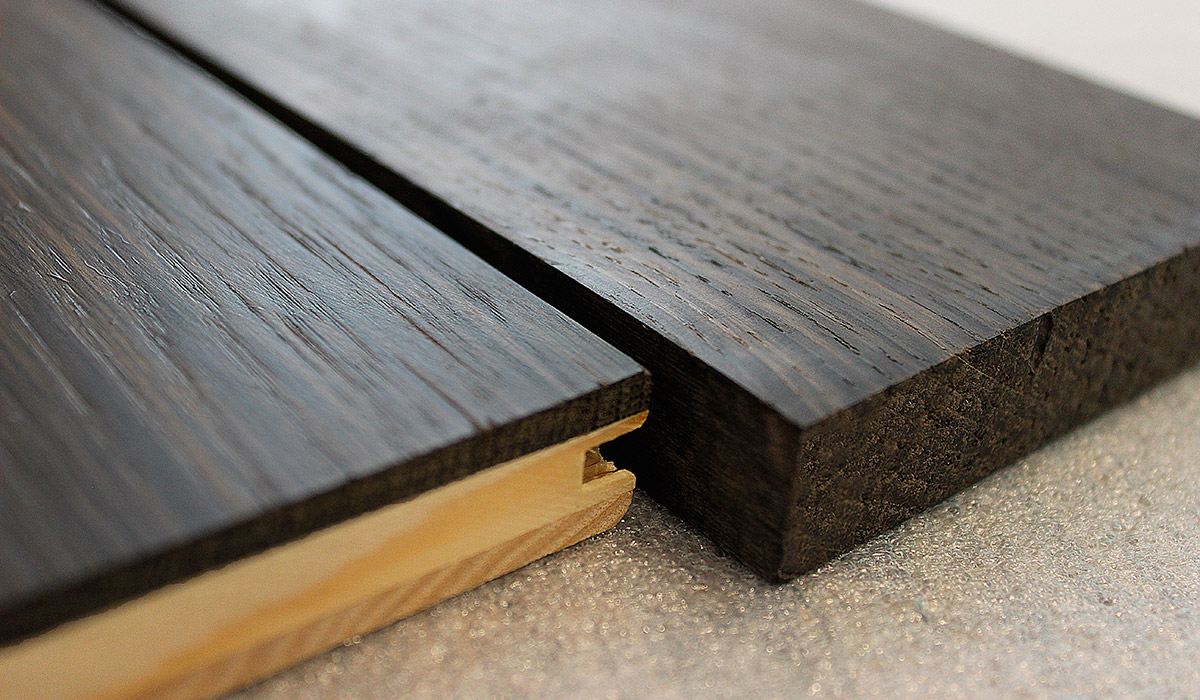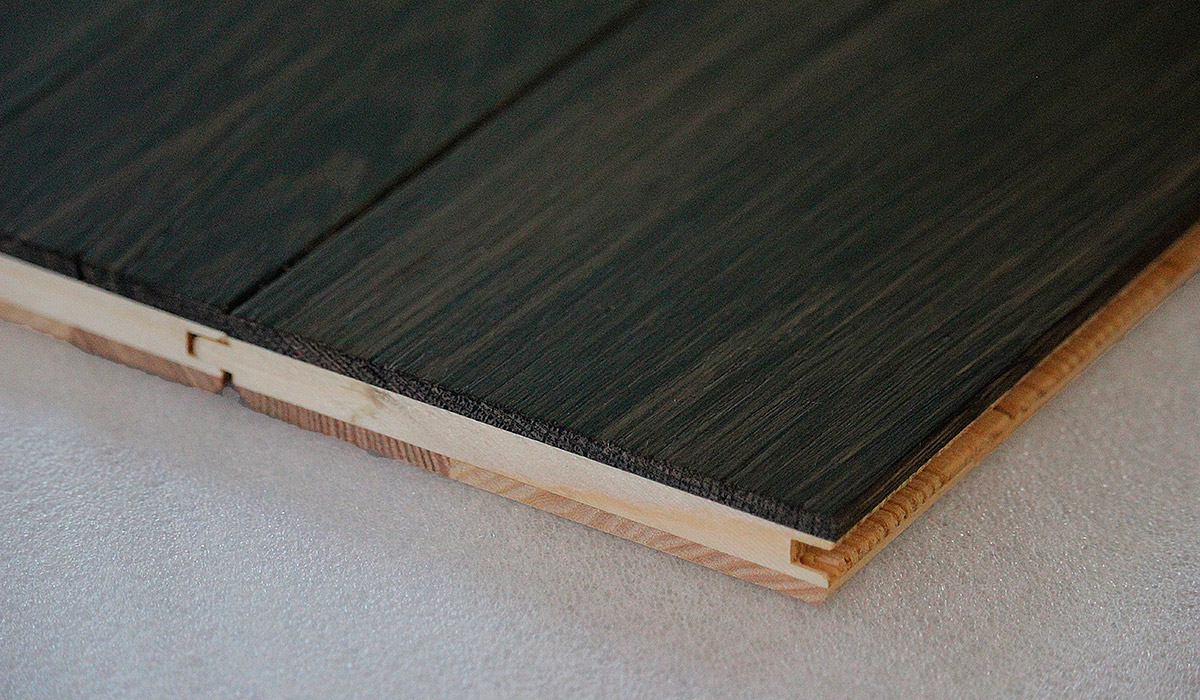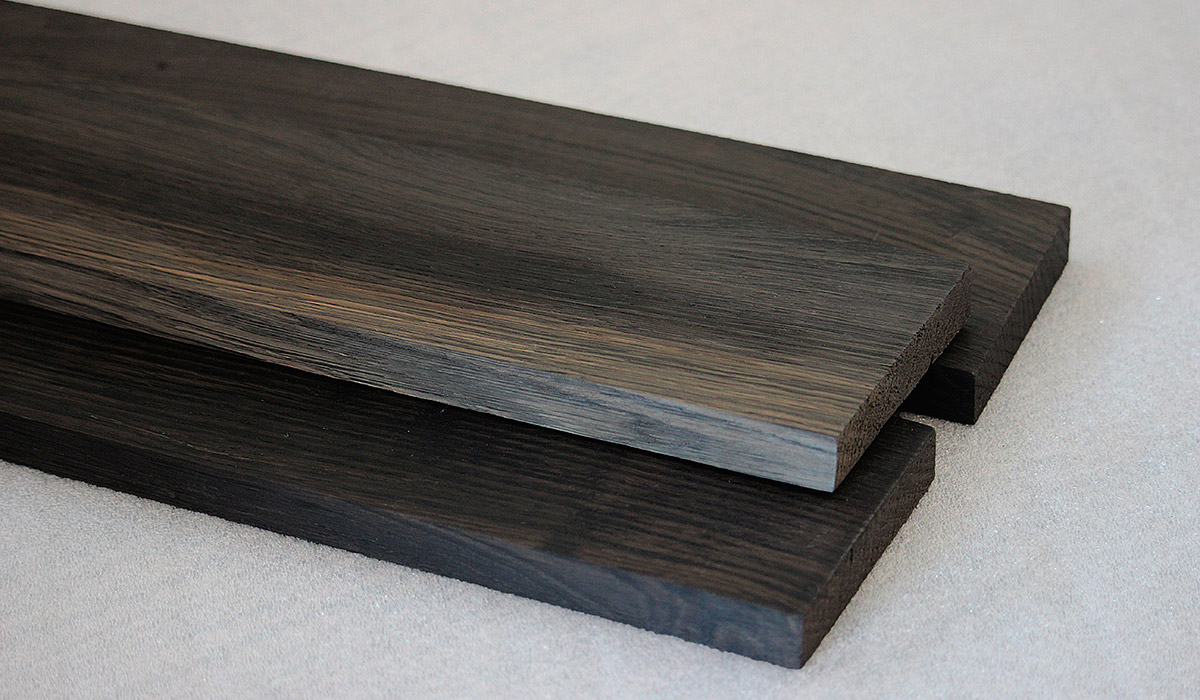Bog oak wooden floors
The bog oak, also called fossil oak, is a product which is obtained from the discovery and then the retrieving of ancient oak trunks immersed for many centuries under the bed of rivers or lakes, in continuous contact with water and earth in an anaerobic and protected environment.
The bog oak is therefore a product that comes since the dawn of times, rare, natural and very precious; it is a unique and inimitable product that has its origin in the pre-industrial era of our distant past.
As a result of natural disasters, floods of rivers, hurricanes and other factors of calamity, these trunks were completely submerged by the rivers. Under the influence of water, sand and earth, and with the influence of the pressure exerted by them, chemical reactions were generated and that have transformed the structure of the wood through the formation of mineral salts, making it more similar to stone, so then increasingly fossil and resistant.
The color becomes more evident, darker, sometimes even black with platinum and ruby veins.
Even the density and the solidity of the material have grown considerably, making this wood unique, completely different from a contemporary Oak wood.
This material is valued and highly sought-after, it is not available in large quantities because its discovery is the result of complex explorations, underwater surveys and complicated operation to pull it out of the original position, as well as long restoration works.
Even its processing must be done with special and careful care using specific machinery.
Lignum Venetia proposes this bog oak as a niche product, particularly sought-after by lovers of unique pieces, suitable for the construction of technical floors and furnitures.
The bog oak is therefore a product that comes since the dawn of times, rare, natural and very precious; it is a unique and inimitable product that has its origin in the pre-industrial era of our distant past.
As a result of natural disasters, floods of rivers, hurricanes and other factors of calamity, these trunks were completely submerged by the rivers. Under the influence of water, sand and earth, and with the influence of the pressure exerted by them, chemical reactions were generated and that have transformed the structure of the wood through the formation of mineral salts, making it more similar to stone, so then increasingly fossil and resistant.
The color becomes more evident, darker, sometimes even black with platinum and ruby veins.
Even the density and the solidity of the material have grown considerably, making this wood unique, completely different from a contemporary Oak wood.
This material is valued and highly sought-after, it is not available in large quantities because its discovery is the result of complex explorations, underwater surveys and complicated operation to pull it out of the original position, as well as long restoration works.
Even its processing must be done with special and careful care using specific machinery.
Lignum Venetia proposes this bog oak as a niche product, particularly sought-after by lovers of unique pieces, suitable for the construction of technical floors and furnitures.




